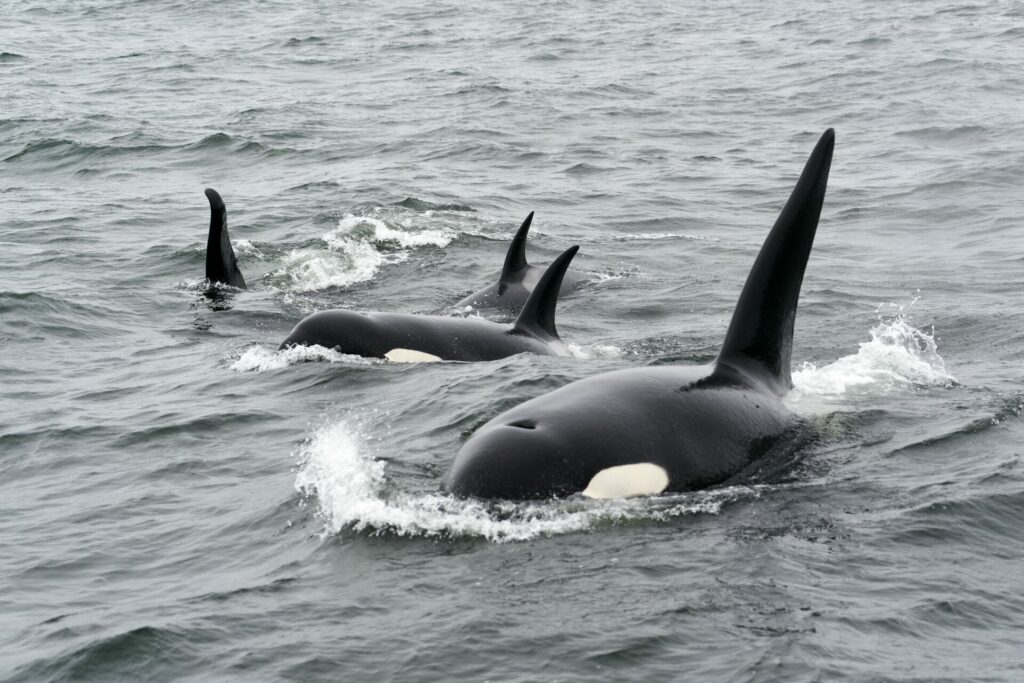There are more than a few wonders to be seen along the rugged shoreline of Argentina’s Patagonian Coastal Steppe. The steep pebbled shore of the Estancia la Esperanza Refuge, protected by WLT partner Fundación Patagonia Natural (FPN), is a rich hunting ground for one of the world’s most powerful predators- the Orca (Orcinus orca).
The refuge’s 12-kilometre stretch of coastline, appears to be a promising spot for a family of Orcas to hunt a local South American Sea Lion (Otaria flavescens) colony. With an enormous range encompassing almost all oceans and seas, Orcas are often nomadic and will migrate thousands of kilometres in search of abundant prey. Despite being so widespread, many local Orca populations are declining, with some considered endangered, due to their extreme sensitivity to prey depletion, pollution, and habitat loss. This selectiveness makes Orcas a key indicator species for the overall health of the areas in which they are seen.
The Estancia la Esperanza Refuge protects 6,700 hectares of Argentina’s Patagonian Steppe, including a 12-kilometre stretch of coastline along the San Matías Gulf. Credit: Fundación Patagonia Natural
At the Esperanza Refuge, they are seen mere meters offshore, preparing to beach themselves to snatch unlucky Sea Lions from the shallow surf. This complex hunting technique requires the perfect combination of time of day, wind direction, and tide for a successful strike. Any Sea Lion separated from the group risks being dragged into the sea and surrounded by the pod, which then kills its prey by coordinated ramming, throwing, and drowning. Though harrowing, these strategies are incredible examples of Orcas’ evident intelligence. The hunting techniques, taught to the young by an elder female, take years to learn. What’s more, the refuge’s stretch of coast of the San Matías Gulf is one of the only places they have been observed breaching the waves to hunt. With a lifespan of 80 years in the wild (though much shorter in captivity), Orcas evolve and adapt their techniques constantly through socialising and exchanging information amongst other pods.
Though commonly referred to as Killer Whales, they are, in fact, not whales at all, but the largest members of the oceanic dolphin family. The centuries-old moniker originates from European fishermen who frequently witnessed Orcas attacking whales and other large marine mammals and earning themselves the name ‘killer of whales’. Despite growing to eight metres long and weighing over 5,000 kilograms, Orcas’ sleek, streamlined bodies can cut through the waves at 56 kilometres per hour. As apex predators of the sea, they hunt systematically in packs, chasing and trapping prey, from sea birds to Giant Turtles to Blue Whales- a mammal more than four times their size. These relentless carnivores are even known to attack Great White Sharks, killing them before surgically harvesting their livers for nourishing fat and vitamins.
Orcas and Sea Lions are just two examples of the extraordinary wildlife thriving in the blustery shores and wide, grassy plains of the Patagonian Steppe. The Estancia La Esperanza Refuge, meaning hope in Spanish, protects 6700 ha of this wild, arid landscape in the northeast of the Chubut Province, Argentina. Founded in 1989, FPN is a collective of local people committed to the conservation and protection of the Patagonian Steppe and its wildlife. In addition to the refuge, the organisation also provides environmental education, conducts research into coastal biodiversity, and operates an emergency rehabilitation centres for animals affected by oil spills.
The shore of the Estancia la Esperanza Refuge, home to an abundance of wildlife, from Guanacos to Penguins, is the only place along the coastline where Orcas have been spotted breaching the waves to hunt their prey. Credit: Fundación Patagonia Natural
The easiest way to support projects like this one in Patagonia is through the Action Fund. By donating to World Land Trust’s Action Fund, we can act quickly, whenever and wherever urgent conservation action is needed.

